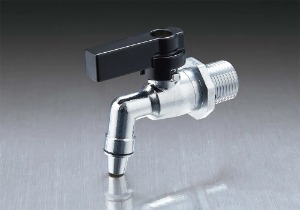2025-07-25
Brass strainer valves are essential components in fluid systems, used to filter out debris and protect downstream equipment such as pumps, meters, and valves. Their ability to prevent contamination and maintain smooth flow makes them widely used in plumbing, heating, and industrial applications. Selecting the right brass strainer valve requires understanding various factors, including material quality, design features, and operating conditions.

Brass is favored for these valves due to its corrosion resistance, durability, and machinability, making it suitable for a broad range of fluids, including water, oil, and mild chemicals.
The foundation of a reliable brass strainer valve is high-quality material composition.
Brass Alloy: Ensure the valve body is made from a robust brass alloy, typically a combination of copper and zinc. The alloy should resist corrosion and wear over time. For potable water applications, lead-free brass is preferred to meet health standards.
Strainer Element: The mesh or perforated plate is often made of stainless steel due to its strength and corrosion resistance. This ensures effective filtration and longevity.
Seals and Gaskets: Look for durable sealing materials such as EPDM, NBR, or PTFE, which provide leak-proof operation and chemical resistance.
Brass strainer valves come in various designs, each suited to specific applications.
Y-Strainer: This design features a strainer element positioned at an angle to the valve body, making it suitable for installation in tight spaces. It provides easy access for cleaning without removing the entire valve.
T-Strainer: The strainer sits perpendicular to the flow path, offering a larger filtration area but requiring more installation space.
Ball Valve with Strainer: Combines a ball valve for flow control with an integrated strainer, useful when both functions are needed in one device.
Selecting the correct type depends on the system layout, space constraints, and maintenance preferences.
The mesh size of the strainer element determines the size of particles that the valve can filter.
Coarse Mesh (40-60 mesh): Suitable for removing large debris such as sand, rust, or scale.
Fine Mesh (100 mesh or higher): Captures smaller particles, protecting sensitive equipment but may require more frequent cleaning due to clogging risk.
Choosing the appropriate mesh size balances filtration efficiency and maintenance frequency.
Brass strainer valves must withstand the operating pressure and temperature of the system.
Pressure Rating: Check the valve's working pressure, usually expressed in PSI or bar. Ensure it exceeds the system's peak pressure to prevent failure.
Temperature Range: Brass valves generally perform well in temperatures up to 200°C, but sealing materials may limit this range. Verify compatibility with your fluid's temperature to avoid leaks or damage.
Proper rating ensures safe, reliable operation under varying conditions.
The method of connecting the valve to the pipeline affects installation ease and system integrity.
Threaded Connections: Common and convenient for small to medium pipe sizes. Ensure threads comply with standards (NPT, BSP) matching your piping system.
Flanged Connections: Provide strong, leak-proof joints for larger diameters or high-pressure systems but require more space and hardware.
Soldered or Compression Fittings: Used in plumbing systems for permanent or semi-permanent installations.
Select connection types compatible with your piping for efficient installation and maintenance.
Maintenance Access: Valves with removable strainers or blow-off ports simplify cleaning and reduce downtime.
Flow Direction: Confirm the valve's flow direction with system design to ensure proper strainer function.
Certification and Standards: Check if the valve meets relevant industry standards (e.g., ANSI, ISO, NSF) for quality assurance and regulatory compliance.